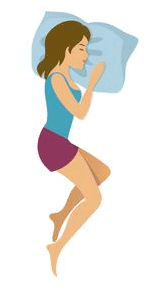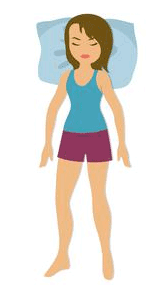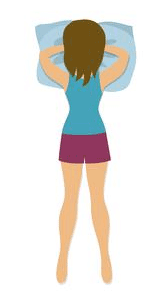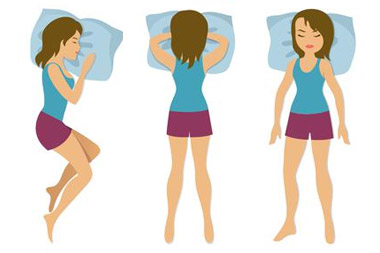Following our earlier post about building good sleep habits for your baby, we’re turning our attention to the equally important topic of sleep positions for grown ups. Approximately 40% of our lives are spent asleep in bed, meaning the correct sleeping position is vital, especially if you suffer from neck, back, shoulder, or hip problems. Our Nightingale physios Roxanne and Mohammed share their inside tips on the best sleeping positions for a pain-free slumber.
Why does it matter how we sleep?
The most comfortable position, mattress, and pillow arrangement enables your body to remain in a neutral and compression-free, middle-range position for the joints. When your joints are held in an extreme position for a prolonged period it can cause pain and irritation, whereas the right posture can prevent problems from developing or reoccurring. Although it’s normal to move around during the night, training your body to sleep in its optimal position can make a real difference.
Each position has its advantages and disadvantages, depending on any physical issues you may have.
Lying on either side:
Side sleeping is recommended for most people, as it allows optimal alignment for the spine and joints, helping you maintain a neutral position and causing less pressure.
- Tips: The knees and hips should be slightly bent up with a small pillow between the knees. The pillow reduces pressure and prevents the pelvis from tipping forwards, rotating the lumbar spine. Make sure that the pillow under your head fully supports the curve of your neck so that your head is in a neutral position. Your ears should be stacked one above the other, preventing your head from tilting down towards the bed (if the pillow is too low) or upwards (if the pillow is too high).

On your back:
The other widely recommended sleep position is lying on your back. This may be beneficial if you have shoulder or hip pain and find it uncomfortable to sleep on your side. However, lying on your back with your legs flat tends to create an arch in the spine, putting stress on the facet joints and shortening the lower back muscles.
- Tips: Position one or two pillows under your knees to reduce the arch in the lower back. Also, ensure your pillow fills and supports the curve of your neck in a neutral position. If the pillow is too big, the back of your head will be tilted forwards; if it’s too low, your chin will point up.

On your stomach:
Sorry if it’s your favourite, but this is the worst position for your body and spine! Your neck gets twisted in one direction, causing compression of the facet joints in the cervical vertebrae, as well as irritability in the arm and shoulder. It creates unbalanced tension in the neck muscles, leading to shortening and spasms, which can cause headaches and neck pain. There may also be an increased strain on the lumbar spine if your mattress is too soft, accentuating the arch and causing lower back pain.
- Tips: If this is the only position you can fall asleep in, try placing a small pillow under your hips or stomach, then use a thin pillow under your head to minimise the twist in your neck. Avoid resting your head on your arms as it may contribute to shoulder pain and restriction.
Your pillow and mattress also affect whether or not you wake up with pain on a daily basis. A physiotherapist will be able to advise you on the correct sleeping posture, as well as what pillow or mattress is the most suitable for you. Contact us to find out more.






